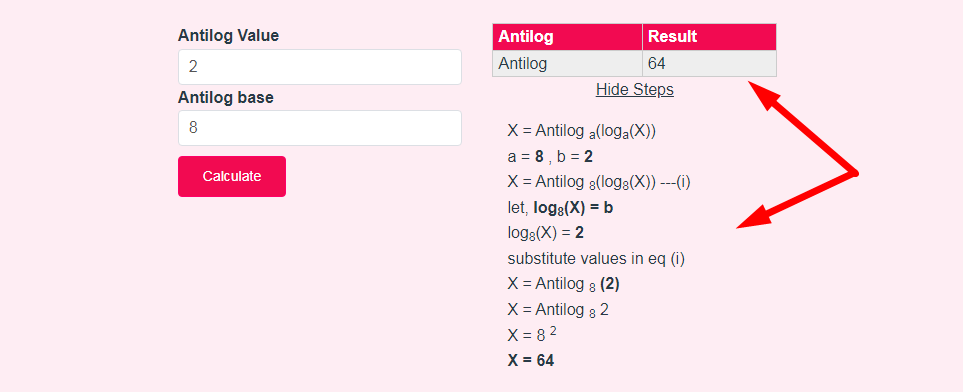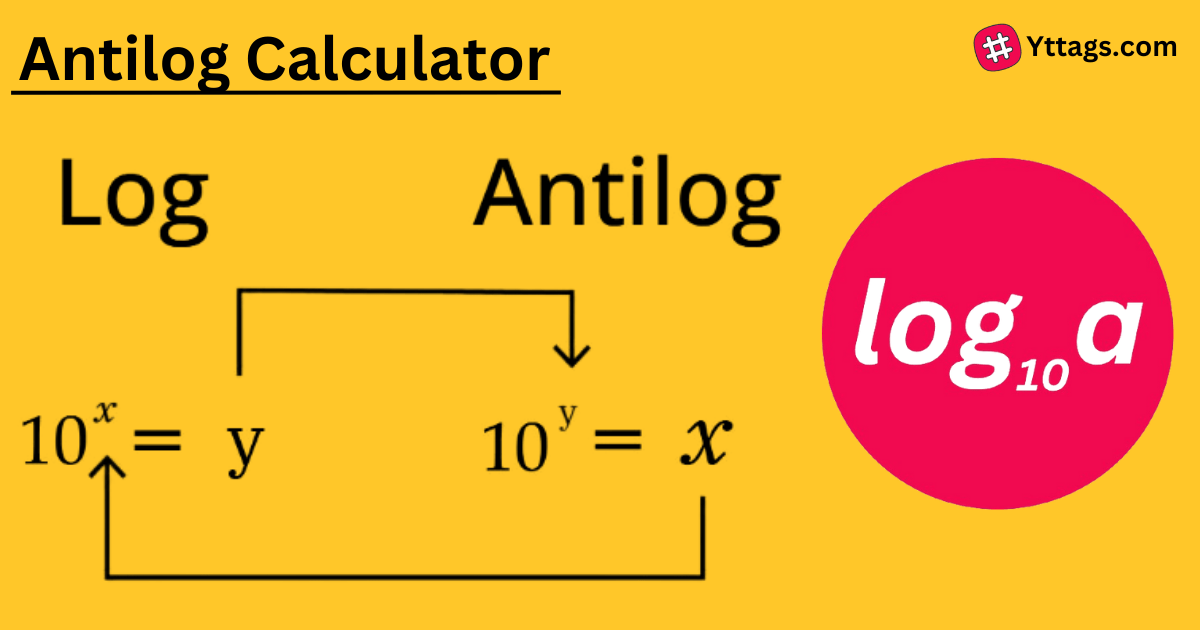Antilog Calculator
Antilog calculator(Inverse Log Calculator) that calculates the inverse log value for the real number with respect to the given or natural base values.
Antilog Value
Antilog base
If you use this great tool then please comment and/or like this page.
Average Rating: Tool Views: 411
Average Rating: Tool Views: 411
Subscribe for Latest Tools
How to use this Antilog Calculator Tool?
How to use Yttags's Antilog Calculator?
- Step 1: Select the Tool

- Step 2: Enter Antilog Value & Antilog base And Click On Calculate Button

- Step 3: Check Your Antilog Calculator Result

Calculate the antilog of any log number. ➤ Online antilog calculator for the antilogarithm function antilog(x). What is an antilog? How to calculate it? Practical applications of antilogs.
If you want to link to Antilog Calculator page, please use the codes provided below!

FAQs for Antilog Calculator
What is a Antilog Calculator?
An antilog calculator is a tool that calculates the antilogarithm, which is the inverse operation of finding the logarithm of a number. It helps determine the original value from its logarithm.
Why do we take antilog?
It is not always possible to handle the numbers which are either too large or too small. To make long, tedious and confusing calculations simple, we change the form of the number using logarithms. The changed number can be put into original form by using antilog.
How to convert log to antilog?
To compute the antilog of a number y, you must raise the logarithm base b (usually 10, sometimes the constant e) to the power that will generate the number y. Where x is the exponent and y is the antilog value. For instance, if we take this equation, log(5) = x, its antilog will be 10x = 5.
What is the value of antilog?
The antilog is the log base 10's inverse. The antilog can calculate the original values of data that have been converted using a log base 10. For instance, if the original data value is 18,349, the log base 10 is 4.2636124.
Who is the father of antilog?
Bürgi. The Swiss mathematician Jost Bürgi constructed a table of progressions which can be considered a table of antilogarithms independently of John Napier, whose publication (1614) was known by the time Bürgi published at the behest of Johannes Kepler.